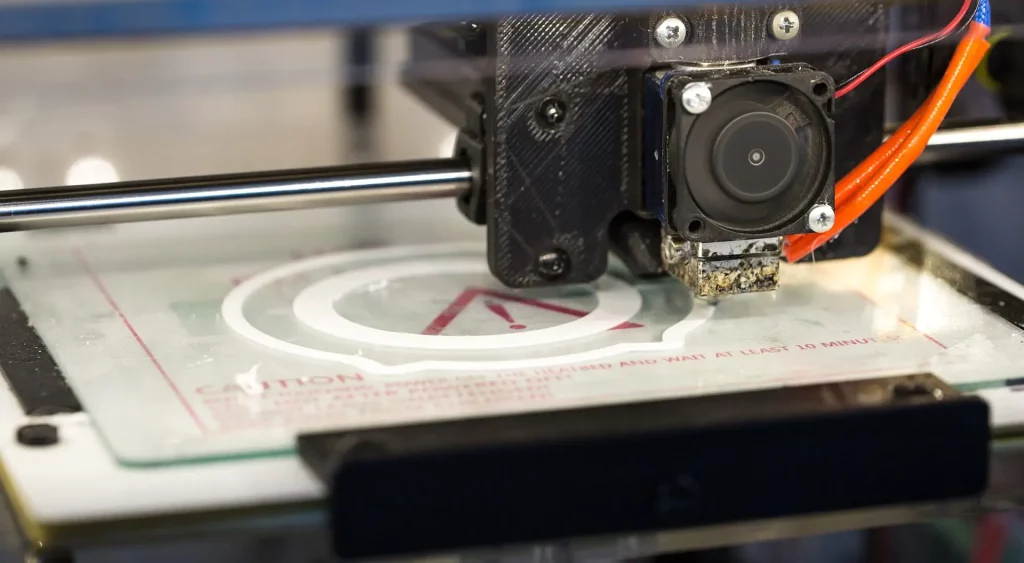The astonishing speed of technological innovation makes it difficult to predict the list of technology trends for 2023. Significantly when life changes daily, take Ameca, for example, which is seeing significant changes in humanoid robotics in 2022. Its fluid body movements, including various facial expressions, make it ideal for interacting with customers without barriers.


To give us a sense of how technology pioneers will shape our lives, this guide comprehensively forecasts all the tech trends that will unfold in 2023. This list fits right in from the highly automated world of work to the launch of the metaverse.
3D printing will change the way we manufacture goods
3D printing is one of the top 10 ideas to change our world in the near future. With 3D printing, complex shapes and objects can be created quickly, with minimal waste and cost. 3D printing also opens up new possibilities for customization, allowing manufacturers to create customized items on demand. This can be a game-changer for manufacturing companies, who are able to produce products faster and cheaper than ever before.

3D printing has the potential to revolutionize the way we manufacture goods. It could replace traditional manufacturing techniques and reduce costs significantly. It also opens up new possibilities for customizing products, allowing companies to create unique items quickly and easily. Furthermore, 3D printing can reduce the waste generated by traditional production methods, making it a much more sustainable option.
Overall, 3D printing is one of the most innovative 10 ideas that could soon revolutionize manufacturing goods. By utilizing this new technology, companies can create products more efficiently, reducing waste and cost while offering customers high-quality products. 3D printing could be the key to making manufacturing more efficient and sustainable in the near future.
Virtual reality will become more realistic and widespread.
Virtual reality is no longer just a concept for futuristic movies but is becoming increasingly commonplace in everyday life. With technological advancements, virtual reality can potentially revolutionize our world experience. With improved visuals, audio, and haptic feedback, users can get a more immersive experience. As more companies invest in virtual reality technology, the hardware cost will become cheaper, and more people will have access to it. This will open up a world of possibilities, from gaming to business applications and medical training. The 10 ideas that VR can help bring to life are endless. From improving the accessibility of virtual worlds to creating entirely new ones, VR has the potential to revolutionize our lives.


Gene editing will allow us to treat and prevent diseases.
Gene-editing technology is expected to treat and prevent human disease in the next few decades. However, the future applications of gene editing in medicine are still unknown, including its applicability and effectiveness for treating and preventing infectious diseases, cancer, and hereditary monogenic and polygenic diseases. This study aims to fill that gap by analyzing the views of more than 1,000 gene editing researchers worldwide. Some of our research results indicate that DNA double-strand breaks are expected to be the most critical gene editing method and the CRISPR-Cas system as an essential programmable nuclease in the next 10 years.

Over the same period, gene editing is expected to have greater applicability and efficacy for treating and preventing infectious diseases and cancer. Untargeted mutations, achieving high levels of therapeutic editing efficiency, difficulties in targeting specific tissues in vivo, and regulatory and ethical challenges are some of the key factors that may hinder the use of gene editing in humans. Taken together, our results demonstrate that gene editing could become a reality for treating and preventing various human diseases in the next 10 years. If the future proves what these researchers hope for, gene editing could transform medicine, healthcare systems, and public health approaches to treating and preventing human disease.
Autonomous flying cars will make transportation more efficient.
Unfortunately, flying cars represent the technological apotheosis of urban sprawl and the eradication of distance as a fact of life for the wealthy elite to break the shackles of gravity routinely. Proponents offer a utopian vision of limitless convenience and efficiency that will bring far-reaching benefits to society. The inescapable reality is that flying cars will benefit direct consumers while exacerbating the geographic isolation of elites – a spatial manifestation of deepening inequalities that undermine the shared experience necessary for upholding democracy. In addition, eliminating distance as a barrier to urban development and land use will have negative environmental consequences.


The desire for traffic-related isolation is nothing new. In the 20th century, Interstate Highways served as conduits for racial, ethnic, and income segregation. Increasing car ownership and supporting infrastructure has allowed developers to capitalize on the large tracts of land surrounding the city center. By reducing the friction of distance, highways acted like a centrifugal force in cities and, more broadly, undermined the racial integration that political movements and courts were trying to achieve.
Flying cars threaten to amplify the corrosive—sociopolitical and environmental—effects of urban sprawl and segregation by eliminating distance entirely. For the wealthy, flying cars’ magnetic appeal stems from their ability in minutes to connect walled home gardens with the rich cultural amenities and economic opportunities of big city life. In short, the high-speed transportation services provided by flying cars will help elites meet the dual demands of hyper-isolation and hyper-access.
Solar energy will become more affordable.
This emerges from the International Energy Agency’s World Energy Outlook 2020. The 464-page forecast released today by the IEA also outlines the “extraordinarily severe” impact of the coronavirus and the “highly uncertain” future of global energy use over the next two decades. In the face of this uncertainty, this year’s highly influential version of the full-year outlook offers four “paths” to 2040, all predicting significant increases in renewable energy.


The IEA’s annual World Energy Outlook (WEO) is released every fall and contains some of the most detailed and carefully researched analyzes of the global energy system. At hundreds of solid pages, it is based on thousands of data points and the IEA’s World Energy Model. The forecast includes several scenarios to reflect the uncertainty surrounding the many decisions that will impact the future trajectory of the global economy, as well as the path the coronavirus crisis will take in the following “critical” decade.

